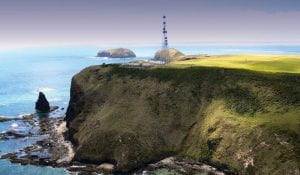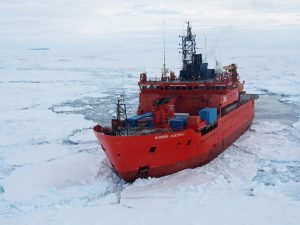Campaigns
Our Future Campaigns
RV Investigator up to Cape Grim: August 2020
Researchers from CSIRO are undertaking a project which takes the RV Investigator up to Cape Grim, Tasmania – home to one of the world’s premier baseline air pollution stations. Cape Grim has been running for over 40 years and is a world-class station of the WMO’s Global Atmosphere Watch Programme. It has provided key data in global, international and regional studies of climate change, air quality and the environment. The RV Investigator was commissioned in 2014, and hosts world-class atmospheric monitoring facilities modelled after the success of Cape Grim. In 2018, the Investigator was recognised as the world’s first mobile GAW station.
An integral part of running a GAW network, is making sure an instrument measuring in one part of the world, is measuring the same as that in another part of the world. To ensure this, regular calibrations are undertaken, and as well as instrument inter-comparisons – running multiple instruments alongside one another to verify their performance. But these activities can only account for part of the sampling system, and is not a complete verification of the station’s measurements. Utilising the inherent mobility of the RV Investigator, we will park the ship alongside the well-characterised and world-class facility that is Cape Grim, to be able to perform a full-station inter-comparison – the first such experiment every performed. Instrumentation from the AIRBOX will be utilised to help understand any differences that may be observed, and to characterise the vertical structure of the atmosphere as it moves over the cliffs at Cape Grim.
The voyage will take place in August 2020 – the wildest time to be in the Southern Ocean – and will include researchers from CSIRO, the Bureau of Meteorology, ANSTO and both Australian and international universities.
Our Past Campaigns
COALA campaign: Jan – Mar – Emmerson / Murphy
Australia has unique biomass – lots of Eucalypts and lots of isoprene emissions. Largely our climate and air quality models use emissions from Northern Hemispheric studies. But as we all know the Southern hemisphere is unique and with AIRBOX observations we hope to understand natural VOCs better. COALA (Characterizing Organics and Aerosol Loading over Australia) is an IGAC supported initiative and endorsed by iCACGP. COALA is in the planning stages working with NCAR’s Atmospheric Chemistry Observations and Modelling Laboratory.
Year of the Maritime Continent: Darwin to Christmas Island Return RV Investigator Oct-Dec 2019
Matthew Wheeler from the Bureau of Meteorology has pulled together a team including AIRBOX partners to understand the Maritime Continent region better. Predicting weather for Australia is very challenged by this region and we hope to gather some observations to improve our predictions. We have been allocated a 61 day voyage of the RV Investigator for 2019/2020 – IN2019_v06. Alain Protat is the Chief Scientist and the dates are 19th October to the 18th December 2019 – essentially 2 x 30 day voyages Darwin to Christmas Island, and Christmas Island to Darwin.

Aurora Australis resupply voyages in 2018-2019
The Southern Ocean and the sea-ice zone are poorly sampled for atmospheric chemistry. In a study led by Robyn Schofield an Australian Antarctic Program (Project #4431) “CAMMPCAN – Chemical and Mesoscale Mechanisms of Polar Cell Aerosol Nucleation” saw AIRBOX head to the Southern Ocean and Antarctica.
AIRBOX and guest instruments have been measuring atmospheric chemistry over the Southern Ocean and through the sea-ice as the Aurora Australis resupplied Australia’s Antarctic bases this summer. Starting in mid-October 2018 until late March 2018-2019, AIRBOX and the Aurora Australis visited Davis, Casey, Mawson and MacQuarie Island stations.
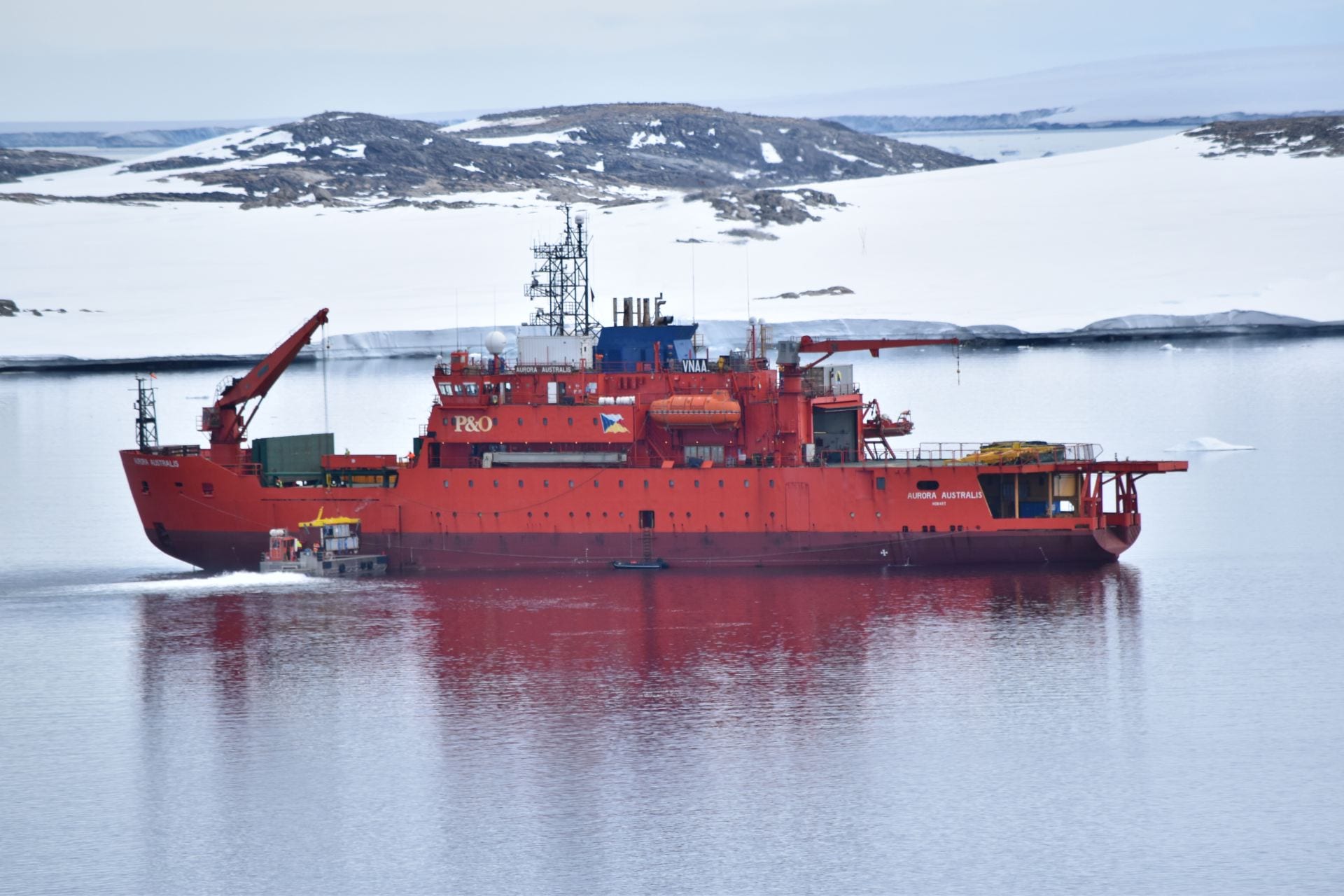 This picture of AIRBOX on the Aurora Australis was taken by Dr Robyn Schofield at Casey Station during Voyage 2
This picture of AIRBOX on the Aurora Australis was taken by Dr Robyn Schofield at Casey Station during Voyage 2
Near sea surface aerosol characterisation using AIRBOX at HMAS STIRLING: April-May 2018
Understanding aerosols in the marine environment is complex around coastlines where sea-breeze and land-breezes alter the aerosol composition daily. Measuring clean marine air with large fetches from the Indian ocean we will be investigating the optical and compositional properties of aerosols with the Defence Science and Technology group on HMAS Stirling.
CAPRICORN Southern Ocean RV Investigator: Jan-Feb 2018
Clouds over the Southern Ocean are one of the major sources of radiation bias between observations and climate models. With sparse observations and challenging conditions – Alain Protat of the Bureau of Meteorology is leading a RV Investigator voyage that aims to improve our understanding of aerosols and clouds in this region. AIRBOX’s team, the mini-MPL and CIMS are facing the Southern Ocean very soon. Capricorn is coordinated with the international SOCRATES flights.
Aurora Australis resupply voyages in 2017-2018
The Southern Ocean and the sea-ice zone are poorly sampled for atmospheric chemistry. In a study led by Robyn Schofield an Australian Antarctic Program (Project #4431) “CAMMPCAN – Chemical and Mesoscale Mechanisms of Polar Cell Aerosol Nucleation” will see AIRBOX head to the ice.
The AIRBOX’s MAXDOAS and Mercury instruments from Macquarie University are measuring during 2017-2018 while the ARM facility and Simon Alexander’s MARCUS project is onboard the Aurora Australis. AIRBOX will measure atmospheric chemistry over the Southern Ocean and through the sea-ice as the Aurora Australis resupplies Australia’s Antarctic bases from October to March 2018-2019 (see future campaigns below).
To see where the Aurora Australis is in 2017/2018 season click here. Follow the MAXDOAS’ Max Desservettaz’s V1 adventures here. Sonya tweeted about her V2 Casey resupply experience (check out our Twitter feed here). Follow V3 to Mawson and then to Davis with Neil Page here.
Reef to Rainforest: September to October 2016
Non sea-salt marine aerosol is produced by algae and corals in our oceans. In a study led by Zoran Ristovski the reef to rainforest campaign measured the aerosol production from the Great Barrier Reef to understand its role in climate. AIRBOX was located at Mission beach while the RV Investigator had the CIMS onboard and measured around the reef system.
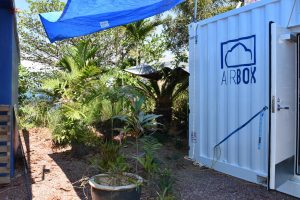
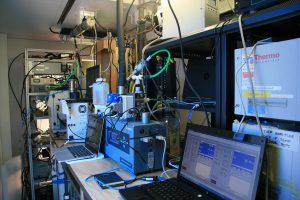
Campaign proposal
Have a proposal to use AIRBOX – please complete a AIRBOX Campaign Proposal to be considered by the steering committee. The committee meets quarterly, but will consider proposals with a faster turn around if required.
